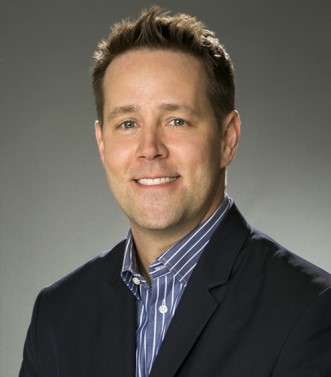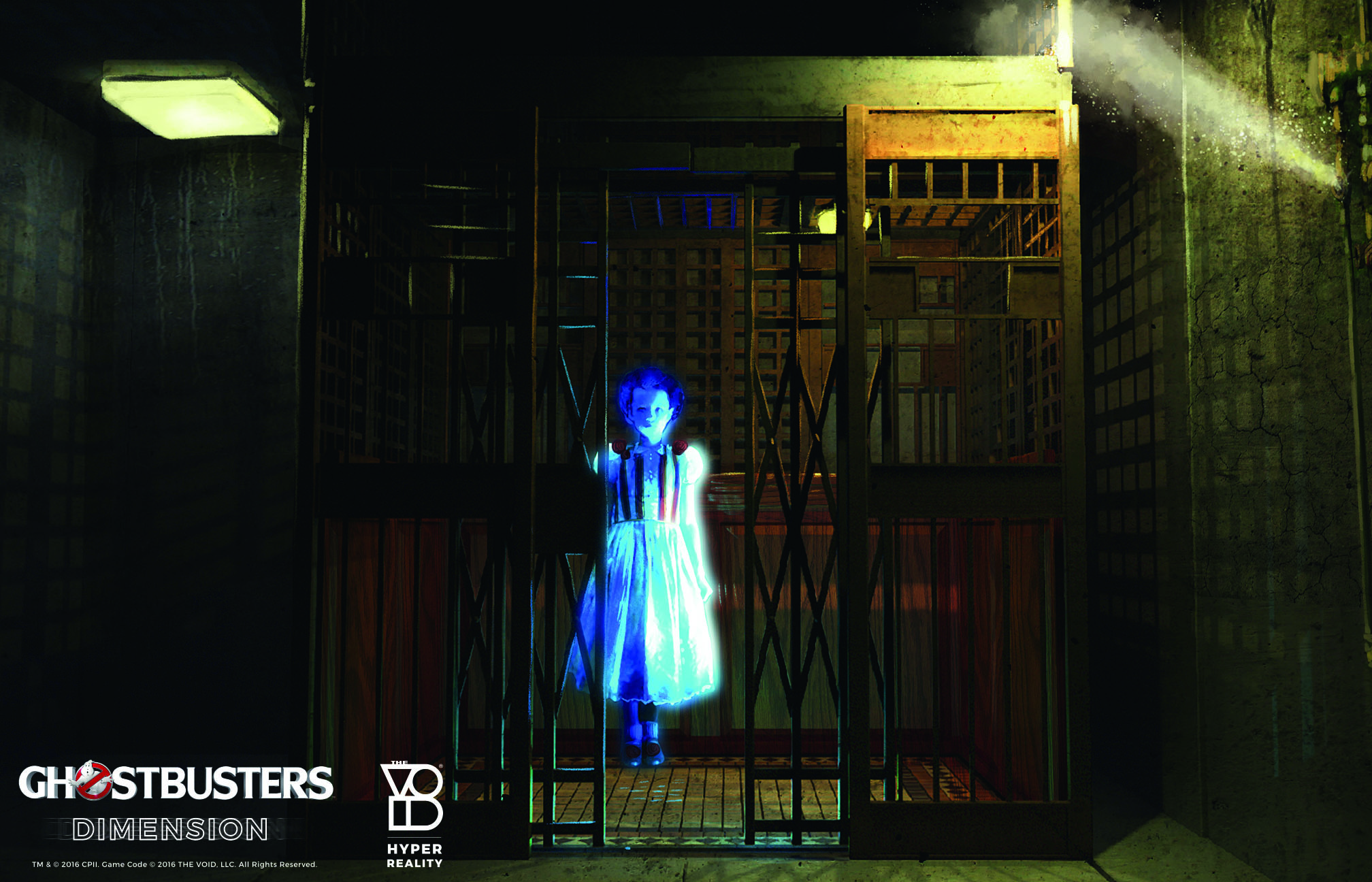There’s something strange in the neighborhood of Times Square, and it’s not hard to guess what. Parked outside Madame Tussauds New York is a Ghostbusters-themed Cadillac hearse, the same model used in the new Ghostbusters movie, in a promotion with Lyft. On July 1 and 2, between 10 am and 8 pm, the Lyft app will feature a special “Ghost Mode” button that will give a few lucky riders in the New York, San Francisco, Los Angeles, Boston and Washington, D.C. areas a free ride from the customized car—complete with lime-flavored Hostess Twinkies and Hi-C Ecto Cooler (both products inspired by the original movie) inside, and a driver dressed in a full Ghostbusters costume.
Meanwhile, inside the famous wax museum, Ray Parker Jr.’s famous 1984 movie theme song is playing, and a crowd of people anxiously await a chance to be haunted. Ghostbusters fever has gripped New York, and Madame Tussauds is at the heart of it with a new Ghostbusters Experience museum exhibit, inspired by the new movie. The exhibit is topped off with a separate “hyper-reality” experience developed by The Void called Ghostbusters: Dimension, where attendees have a chance to strap on proton packs and live out the dream of being a Ghostbuster in virtual reality. It’s a movie promotion that’s unlike any other, and one that leaves attendees wanting to come back for more.
Jake Zim, SVP of virtual reality for Sony Pictures, talks to [a]listdaily from the opening of the Ghostbusters Experience at Madame Tussauds New York about growing the business of virtual reality entertainment, starting with Ghostbusters: Dimension. The movie starring Kristen Wiig, Melissa McCarthy, Kate McKinnon and Leslie Jones premieres in theaters on July 15.

What does the Ghostbusters: Dimension experience mean for the future of Sony Entertainment?
Being here, you can feel the energy at Madame Tussauds with The Void. The Ghostbusters virtual reality experience is really one of the first steps that we are taking to turn VR and our IP into a new kind of business where we can tell narrative stories in new ways.
We’ve done a couple of promotions in the past for The Walk, where we had people walk the actual wire between the Twin Towers, and then for a movie called Goosebumps, where we had people in a chair riding with Jack Black through the town from the movie. Those were both exciting and fun marketing promotions that we did in VR. Coming out of that, we said, “Wait a minute. Maybe there’s an actual business here.” Our colleagues at PlayStation were developing the PlayStation VR platform, so we spent a lot of time with them to try to understand what they’ve been working on and how to create stories for VR. And we’ve worked with a variety of platform partners to understand and educate ourselves on what VR could offer.
Ultimately, our expertise is in storytelling and narrative. The idea of adding a layer of interactivity—or multiple layers, as VR does—into the opportunity for storytellers to tell great stories and artists to create visions in a new medium was super exciting for us. So, we’ve come together as a company, and we’ve started to put together this strategic vision of how we’re going to build that business. This Ghostbusters experience is the first commercial version that we’ve deployed.
Do you think that future movies from Sony Pictures will be filmed with similar experiences in mind?
I think there are a lot of ways that this is going to happen, and that’s one of the many models that we’re going to try. Ultimately, we’re not trying to create the same movie that you’ll see in the theater on a 2D or 3D screen in VR shot-for-shot. What we’re looking to accomplish is, in the example of where there is an existing or upcoming movie, that movie has a world… and that world allows us to create a distinctly unique narrative that’s customized for the VR experience.
So, when we start to develop a movie concept or greenlight a project—yes, we are thinking about what the VR thing is from the inception of any production moment or even the concept. A filmmaker comes to us and pitches an idea, and we’re thinking at the beginning of the process about the VR component of it. But generally speaking, we’re trying to build on and extend the world, instead of overlap or layer into the world too much.
Again, we don’t know exactly how all of this content is going to play out. In some cases, you may want to live a special iconic scene from a movie. You may want to live that in VR, so perhaps we’re going to have to figure out a way to give people a chance to do that. Ultimately, the audience is going to tell us what they want, and that’s what’s so great about entertainment. We can make movies, make TV, and we can make VR stuff all day long. But we have to put it out into the world and let people see how it works and how it feels. In this early stage, we’re going to try a lot of things, learn from it, and keep going back to make great stuff.
What makes Ghostbusters the ideal movie to kick off Sony’s first commercial VR experience?
There are a couple of low hanging fruit answers, which include: Ghostbusters have proton packs, and this VR experience here with The Void has a backpack and proton blaster. So there are a lot of organic hardware reasons why. But ultimately, the real reason why is, I would bet that you can go up to anybody, anywhere—certainly in New York, if not the world—and say, “Would you like to be a Ghostbuster? Would you like to go into the Ghostbusters world with your buddies for ten minutes and bust ghosts?” People are going to say yes because it’s an iconic franchise, the nostalgia is there, and the new movie is on people’s minds.
Whether it’s the classic Ghostbusters or the women from our upcoming movie, they’re fun, funny and “having a good time” kind of people. I think everybody aspires to be like that. So Ghostbusters is perfect for VR because you get to be in the world, and who wouldn’t want to be a Ghostbuster?

Do you think there will be a lot of movie cross promotions with PlayStation VR when it launches in October?
I think it’s clear that we’re going to work very closely with the PlayStation team on a variety of different initiatives related to VR. We believe very strongly that they’ve got a great product and have a great position in the market, and we want to help develop their product as well as develop our own content. Yes, there are going to be some great ways Sony Pictures and PlayStation VR are going to be collaborating in the future. But our goal at Sony Pictures is to make great content, and that’s it. Whether it lives on PlayStation or other places in the world, like here at Madame Tussauds New York, a location-based environment. The core idea is that we’ve got to make great experiences that feature all of the assets of what great VR can offer.
Ghostbusters: Dimension is a great location-based attraction, but have you considered developing content for mobile VR viewers, or premium headsets like the Oculus Rift?
Absolutely. If you think about all of the distribution channels through which virtual reality can be delivered, location-based is just one of them. The in-home market is going to grow over time, and certainly, when PlayStation VR launches in October, we expect it to push the process forward.
The mobile market is already, to a certain level, an addressable audience, and that will also grow. China and Asia are very important for us to look at in terms of what those markets are doing. Each of those different channels have different features that we need to create and develop for. Whether it’s walking around in a 900 square foot environment like the one we have here, in the comfort of your own home, or imagining people doing VR on the subway using mobile devices with a mobile HMD. We’ve got to be thinking about all those platforms and developing properly so that the narrative and the interactive benefit and enhance the value of those platforms.
What were your first thoughts when you tried out the Ghostbusters: Dimension experience?
My first thought was, “This is incredible! I’m actually getting to be a Ghostbuster.” The first version of this experience that I did was a very early alpha, where it was a gray box environment, and I had a proton blaster, and I could just blast a ghost. It was a floating, volumetric, spherical ghost—but my proton stream looked like a Ghostbusters proton stream and the physics of it worked. So, when I latched on that ghost, I could yank it around. Despite the fact that there was no lighting, no shadows, and everything was in a low-poly environment, I got a sense right there that I was present, and I had control and busting ghosts. To me, that sort of blew out some sort of vortex hole in my head and I said, “I’ve got to do more of this.”
Every iteration of this—and I’ve done this ten or fifteen times as The Void guys have developed it—has just gotten more rich and colorful. I’ve found more things about it that are crazy; little Easter eggs here and there. It’s exhilarating for me to be able to watch that process, and I’m very honored to be part of it and help drive it. But at the very base of it, it’s just fun. And that’s what it’s all about.

